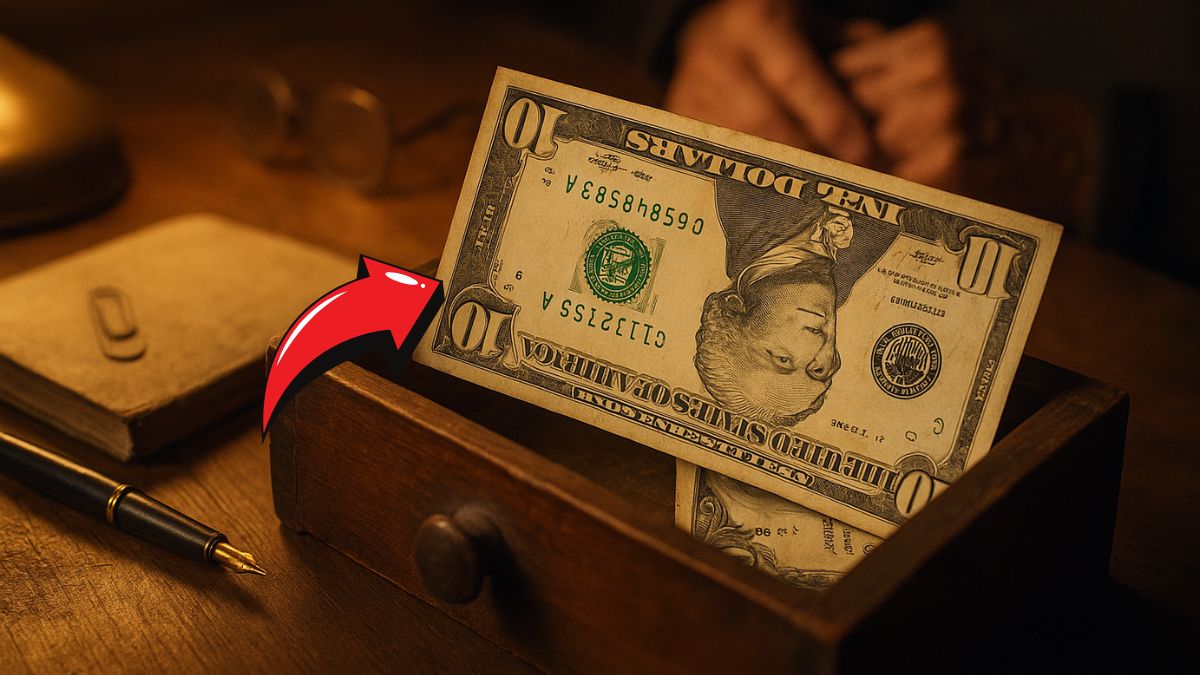In a remarkable discovery, a 1985 $10 bill with an inverted print error was found tucked away in an old desk drawer, capturing the attention of currency collectors and enthusiasts alike.
This rare find has ignited a wave of interest, highlighting the allure and value of misprinted currency notes.
Understanding Inverted Print Errors
An inverted print error occurs when one side of a banknote is printed upside down relative to the other. Such errors are rare and typically result from misalignment during the printing process at the Bureau of Engraving and Printing.
These anomalies are highly sought after in the numismatic community due to their scarcity and the intrigue they add to currency collections.
The Discovery: Details of the 1985 $10 Bill
The discovered note is a Series 1985 $10 Federal Reserve Note, exhibiting a clear inverted print error where the back of the note is upside down in relation to the front.
The bill remains in excellent condition, with crisp edges and minimal signs of wear, further enhancing its desirability among collectors.
Market Value and Collector Interest
The value of error notes like this can vary significantly based on the type of error, the note’s condition, and demand among collectors.
Similar 1985 $10 bills with inverted print errors have been known to fetch prices ranging from $200 to over $800 in auctions and private sales. The exact value of this particular note would depend on a professional appraisal and grading.
Comparative Table: Recent Sales of Similar Error Notes
| Year | Denomination | Error Type | Condition | Sale Price |
|---|---|---|---|---|
| 1985 | $10 | Inverted Back Print | XF | $849 |
| 1985 | $10 | Offset Printing Error | VF | $720 |
| 1985 | $10 | Misaligned Overprint | AU | $1,000 |
| 1985 | $10 | Multiple Impression Error | EF | $850 |
| 1985 | $10 | Fold Over Error | VF | $900 |
Note: Prices are approximate and based on recent auction results.
Factors Influencing the Value of Error Notes
Several elements contribute to the valuation of error currency:
- Rarity of the Error: Inverted print errors are uncommon, increasing their value.
- Condition of the Note: Notes in better condition (e.g., uncirculated) are more valuable.
- Demand Among Collectors: High interest can drive up prices.
- Authentication and Grading: Professionally graded notes often command higher prices.
Authentication and Grading
For collectors and sellers, having the note authenticated and graded by a reputable service like PMG (Paper Money Guaranty) or PCGS Currency is crucial.
These services assess the note’s authenticity, assign a grade based on its condition, and encapsulate it for preservation. A higher grade can significantly increase the note’s market value.
The discovery of this 1985 $10 bill with an inverted print error serves as a fascinating reminder of the unexpected treasures that can be hidden in plain sight. For collectors, such errors are not just anomalies but pieces of history that tell unique stories.
As interest in numismatics continues to grow, the value and intrigue of error notes like this are likely to increase, making them prized possessions for enthusiasts worldwide.
FAQs
How can I identify an inverted print error on a banknote?
Hold the note and observe the orientation of the front and back. If one side is upside down relative to the other, it’s an inverted print error.
Are all misprinted notes valuable?
Not necessarily. The value depends on the type of error, the note’s condition, and collector demand. Rare errors in excellent condition are typically more valuable.
Where can I sell or appraise an error note?
Reputable auction houses, currency dealers, and online marketplaces like eBay are common venues. For appraisal, consider services like PMG or PCGS Currency.

